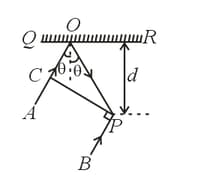Embibe Experts Solutions for Exercise 3: Assignment Set-2
Embibe Experts Physics Solutions for Exercise - Embibe Experts Solutions for Exercise 3: Assignment Set-2
Attempt the free practice questions from Exercise 3: Assignment Set-2 with hints and solutions to strengthen your understanding. Gamma Question Bank for Engineering Physics solutions are prepared by Experienced Embibe Experts.
Questions from Embibe Experts Solutions for Exercise 3: Assignment Set-2 with Hints & Solutions
In a YDSE set up in air, the fringe width is If the whole set up is now immersed inside a liquid of refractive index , the fringe width will become , find
Two identical sources and emit light waves in same phase and of same wavelength Distance between and is The maximum distance from along the -axis at which a minimum intensity occurs is given by times , find

Two beams of light having intensities and interfere to produce an interference pattern on a screen. The phase difference between the beams is at point and at point Then the difference between the resultant intensities at points and on the screen is , find
In Young's double slit experiment intensity at a point is of the maximum intensity. If angular position of this point is , then value of is
A beam of unpolarised light of intensity is passed through a polaroid and then through another polaroid which is oriented so that its principal plane makes an angle of relative to that of If intensity of the emergent light is , then value of is
Two coherent monochromatic point sources and of wavelength are placed symmetrically on either side of the centre of the circle as shown. The sources are separated by a distance This arrangement produces interference fringes visible as alternate bright and dark spots on the circumference of the circle. Total number of fringes produced between and is close to _____.

In the diagram shown below, represents a wavefront and and , the corresponding two rays. The condition of for constructive interference at between the ray and reflected ray is , then is

In a single slit diffraction experiment, first minimum of coincides with first maximum of The value of is _____
